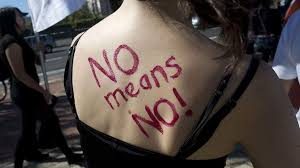Sexual Assault Cases on the Rise
Statistics report that 1 out of 5 women in Australia will be sexually assaulted at some point in their lives. At 16.4 per cent of women who have been sexually assaulted by someone other than a partner according to the UN, that puts us third behind South Africa, Namibia and Zimbabwe worldwide and more than double the 7.2 per cent global average.
ABC News reports that, according to 2015 crime statistics, sexual assaults had risen 3per cent since the previous year with a six year high of 21,380 victims across the country. The Australian Bureau of Statistics shows that people aged 10 and over charged with sexual assault and related offences had increased to 7,175 in 2013-14 up from 6,006 the year before.
The vast majority of victims of sexual assault know the person who assaulted them. Karen Willis, executive officer of the NSW Rape Crisis Centre, reports that more than 70 per cent of sexual assaults are committed by people known to the victim such as a: family member, friend, co-worker, or school mate. Another 29 per cent of sexual assaults are carried out by someone a person knows socially. Only 1 per cent of sexual assaults are perpetrated by strangers.
Sexual assault can happen to anyone, anytime, anywhere. No one is immune regardless of age, gender, cultural background, economic status or sexual orientation. For example, in 2014 two teenage girls were sexually assaulted by security guards at the Macarthur Square shopping centre in Sydney. A 2008-09 Report on the Operation of the Aged Care Act revealed that 272 residents residing in an aged care facility had been sexually assaulted.
The leading cause of sexual violence
According to ABC News, more than approximately one third of all sexual assaults reported last year were linked to family violence. Of those sexual assaults related to Family and Domestic Violence (FDV), 85 per cent of victims were women and 3,730 or 59 per cent of those women were between the ages of 0 to 19.
What is also quite troubling is that the number increased 7 per cent with a rate of over 7,464 female sexual assault victims being associated with FDV from 2014 to 2015.
Tolerance of Violence
It has been suggested in an article in SBS.com that we support a culture of male superiority and female objectification in our society. This “hyper-masculinity” of some men results in their need to exert power and sometimes do so by violent means. Heather Nancarrow, Director of the Queensland Centre for Domestic and Family Violence Research at Central Queensland University, is quoted in the article as stating “we ought to be concerned about the level or the tolerance of violence . . . that exists against women.” As she suggests, this “cultural barrier” may be what is keeping women from reporting incidents of sexual and physical assault.
Why is there an increase in sexual assault cases?
The Guardian reports that new data shows “the number of people charged with sexual assault offences in 2013-14 increased nationally by 19 per cent.”
It is believed that about 17 per cent of sexual assault cases are reported to police. However, many feel that this does not paint a true picture because there are many more cases of sexual assaults that do not get reported. According to the Australian Institute of Criminology an estimated 70 per cent of sexual assaults incidents are not reported to police.
The reason sexual assault rates appear to be rising has been widely debated. Some critics say that it is because perpetrators are not getting stiff enough penalties. As a result there is a large recidivism rate. According to figures issued by the NSW Bureau of Crime Statistics and Research, more than 18 per cent of offenders had three or more prior convictions.
Secondly a vast majority of assault survivors are in a relationship with the offenders, which means they do not necessarily want their spouse or partner to go to jail, they just want the violence to stop. Therefore they do not report the assault and the cycle continues.
Thirdly, as Rodney Vlais, a spokesman for the men’s family violence prevention organisation No to Violence, has suggested maybe it is not that there are more cases of sexual assaults but rather more cases that are now being reported. This increase in reported rape could be due to a variety of reasons, according to the Australian Institute of Criminology, including greater public awareness about what sexual assault is and violence against women in general. This increased knowledge may be, as Vlais suggests, what is giving women the confidence to come forward and report the incidents of sexual violence perpetrated against them.
Whatever the reason, Australia has one of the highest rates of reported sexual assault in the world. One of the real challenges in breaking this cycle is to continue to encourage women to report incidents of sexual and physical assault. This can be done by continuing to direct community and public attention to violence against women.
An article in the SBS suggests that alternative penalties such as introducing mandatory behavioural programs into the justice system could curb the number of reoffenders. Others argue that we need to make reforms to our court system that addresses a court culture that protects the accused.
If you or a woman you k now is experiencing sexual or physical violence you can get help at1-800-RESPECT, a national telephone support line.







